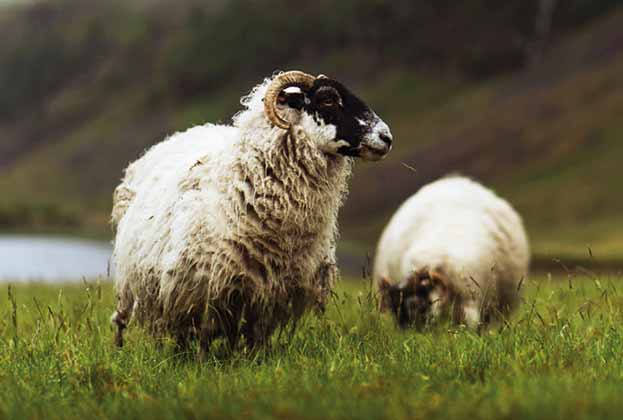Supply of farmland has increased modestly and farmers are exiting the industry, but in our assessment, there won’t be a step change in acres available
Relative to historic activity levels, supply for the GB farmland market remains low and continues to have a significant influence on the market’s performance. Buyers with local or national requirements compete for the limited opportunities available in a constrained market. Encouragingly supply is increasing from its recent lows, which we have attributed to the uncertainty linked to agricultural policy reform and the impacts of Covid-19. There were 127,900 acres of farmland publicly marketed during 2022, which is the most since 2018.
While the overall national supply has increased, there is considerable regional variation (see chart below). On the one hand, in Scotland, the farmland market was 16% smaller in 2022 than in 2021, and in the East and West Midlands, it was 29% and 7%, respectively, below the previous year. Over the last few years, supply has been particularly constrained in the West Midlands – just 7,100 acres were advertised in 2022 – the lowest area since 2004.
On the other hand, supply levels were exceptional in the East of England, Britain’s “breadbasket” where 84% of farmland is mainly used for cereals or root cropping. In the region, 67% more acres of land were marketed than in 2021 and 22% more than the ten-year average. There were more larger properties on the market, including 13 properties over 500 acres compared to a ten-year average of seven properties.
.jpg)
EXIT OR ADAPT
Boosting productivity is a core objective of each government’s plans for adapting Great Britain’s agriculture industry to a post-Common Agricultural Policy (CAP) world. In England, the agricultural transition with its Farming Investment Fund, Future Farm Resilience Fund, Lump Sum Exit Scheme (LSES) and progressive withdrawal of direct farm support was designed to encourage farmers to review the viability of their businesses and adapt or exit.
Boosting productivity is a core objective of government plans for adapting Great Britain’s agriculture industry to a post-Common Agricultural Policy world
Andrew Teanby, Associate Director, Rural Research
This is undoubtedly happening. Applications for the LSES closed in September with over 2,000 received, representing 2.6% of England’s farms, with a clear bias towards smaller farmers due to the £100,000 payment cap in place. According to Savills modelling, these applications cover 260,000 acres of land, which is 1.2% of England’s agricultural land area, equivalent to 20% of Lincolnshire’s agricultural land area or 50% of Hampshire’s. Expressed in these terms, it does not sound large, but, to put it in context, it is double the area of farmland that was offered for sale on the public market in England in 2022.
To access their tax-efficient lump sum, these applicants must sell, let or transfer their land by 31 May 2024. The scheme will consequently lead to more farmland sales in 2023 as it is effectively the only marketing season available. However, we predict that the amount of farmland for sale will not increase significantly because capital taxation policy continues to encourage its long-term retention and in most cases, the farm is also the family’s long-standing family home, so ties are strong.
In our assessment, the majority of retirees will meet the scheme rules by surrendering rented land to their landlord or, if owned, transferring it to their successors, or renting it out under a Farm Business Tenancy. This is backed up by analysis of farm machinery dispersal sales in 2022 (see chart below); sale of the farm is only explicitly stated as a reason for the auction in 15% of cases, far more are due to retirement or a “change in farming policy” and it is often suggested the farm will be let or contract farmed.
A step change in land occupation rather than land ownership will therefore result from Defra’s actions. In fact, more retirements are expected than the LSES is facilitating; Defra’s April 2022 Farmer Opinion Tracker survey found 9.4% of farmers expect to retire, pass on the business to the next generation or leave for other reasons within the next three to five years. The LSES and our farm machinery dispersal sales analysis confirms these intentions are becoming action, and some will no doubt lead to a sale of the farm itself.
Developments during the course of 2022 have strengthened the appetite for land ownership. It is now clear that the UK economy is heading into a recession and economic uncertainty tends to lead to the retention of real assets such as farmland. Supply fell 26% across Great Britain during the global financial crisis (December 2007-2009). There is also increased recognition, as a result of the war in Ukraine, that food, fibre and fuel, and the land that they can be produced on, are important resources. These factors potentially deter sales but also build demand. Given the extent to which the market is supply constrained, our agents reported sales for 20% over the guide price were not uncommon in 2022. Those who do decide to sell could benefit from this competition, so it is worth landowners giving serious consideration to whether continued ownership of farmland or perhaps disposal with the benefit of business asset disposal relief and reinvestment elsewhere better meets their objectives. Over a quarter of vendors in 2022 were selling to unlock money for investment into non-farming activities (see chart below).
Higher interest rates could also encourage sales. The average value of farmland is at an all-time high, offering an opportunity for investors to cash out profits and secure a fixed return on the capital released. Debt-related sales due to poor trading performance or exposure to variable interest rates could become a factor too. For some farmers, the growing cost of debt may lead to uncomfortable decisions about their future in the industry. While serviceability may be an issue with cashflow constraints caused by the agricultural transition, the average farm business gearing ratio is just 11%, suggesting most will have scope to accommodate the implications of an increase in their cost of debt, for at least a period of time. The pig and poultry sectors are under most financial stress, but tend to either have a limited land footprint or be part of a wider mixed enterprise that offers a degree of whole-business resilience.
The average value of farmland is at an all-time high, offering an opportunity for investors to cash out profits and secure a fixed return on the capital released
Andrew Teanby, Associate Director, Rural Research
There are clearly a diverse range of factors influencing the area of farmland available for sale in the UK. Overall we expect more land to be brought to market than has been the case recently, and while ordinarily, you would argue that an increase in supply could adversely affect land values, we consider this is unlikely given the current disparity between supply and demand. On that basis, we forecast that farmland market activity will rebuild to 150,000 acres by 2024 and continue at around that volume out to 2027.
Read the articles within Spotlight: The Farmland Market below.


